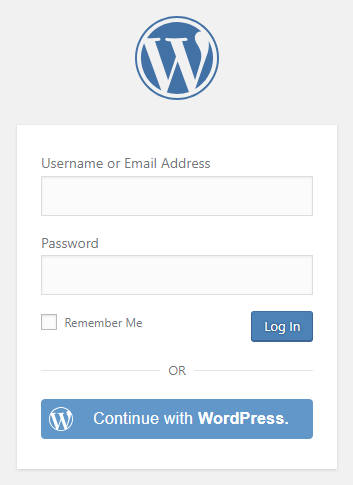
Table of contents
How to enable WordPress.com login in WordPress
1. Create a WordPress.com App
To be able to log in via WordPress.com you must create a WordPress.com app first.
- Navigate to https://developer.wordpress.com/apps/
- Log in with your WordPress.com credentials if you are not logged in.
- Click on the “Create New Application” button.
- Enter a “Name” and “Description” for your App.
- Fill “Website URL” with the url of your homepage, like: https://yoursite.com/
- Into the “Redirect URLs” field you should add the URL that Nextend Social Login suggests at the backend.
- You can leave the “Javascript Origins” field blank!
- Complete the human verification test.
- At the “Type” make sure “Web” is selected!
- Click the “Create” button!
- Click the name of your App either in the Breadcrumb navigation or next to Editing!
- Here you can see your “Client ID” and “Client Secret”. These will be needed in the plugin’s settings.
2. App setup
Once your WordPress.com app is ready you’ll need to copy and paste the Client ID and Client Secret to the WordPress.com provider’s Settings tab.
3. Verifying
Once your Client ID and Client Secret has been added you need to verify the setup first. This verification helps you identify possible problems with the app.
Settings
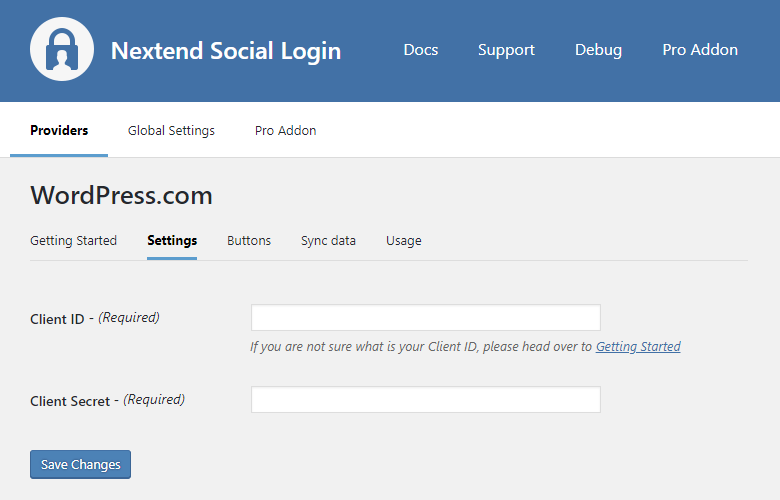
Client ID
The Client ID of your WordPress.com app. You can find it at under your App’s OAuth Information section.
Client Secret
The Client Secret of your WordPress.com app. You can find it at under your App’s OAuth Information section.
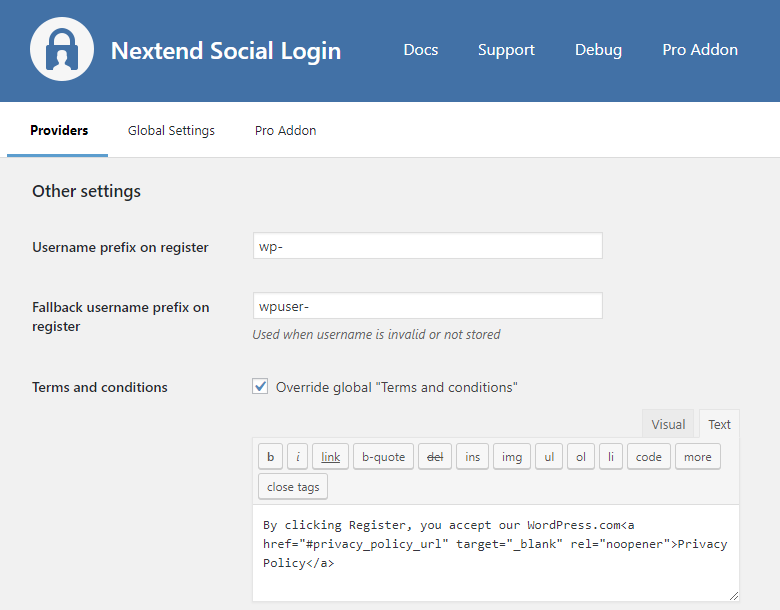
Username prefix on Register
Whenever a new user registers with their WordPress.com account they can get a custom prefix so you can easily identify them.
Fallback username prefix on register
Whenever a new user registers with their WordPress.com account and we can not generate a valid username from the first name or last name, a random username will be generated. With this option they can get a custom prefix so you can easily identify them.
Terms and conditions
This option can only be seen, if Terms and conditions is set to Show in Global Settings → Privacy tab. Here you can set custom Terms and Conditions for users who register with WordPress.com. For more information please read our GDPR documentation.
Sync data
By default Nextend Social Login stores the first name, last name, email, avatar url and access token if it is possible, however some additional information can also be retrieved and stored.
When an option is checked, that field will be stored in a meta key with the specified name.
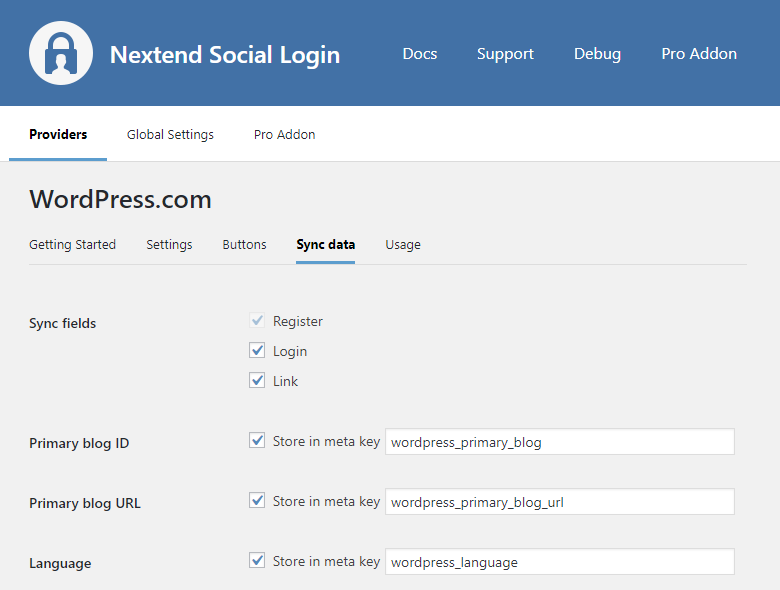
Sync fields
It determines when the synchronization shall happen.
- Register: whenever a new user registers with a provider, their data will be retrieved and stored.
- Login: whenever user logs in with a provider, their data will be retrieved and stored.
- Link: whenever user links and existing WordPress account with a provider, their data will be retrieved and stored.
Primary blog ID
Stores ID of the user’s primary blog.
Primary blog URL
Stores the URL of the user’s primary blog.
Language
Stores the user’s language setting.
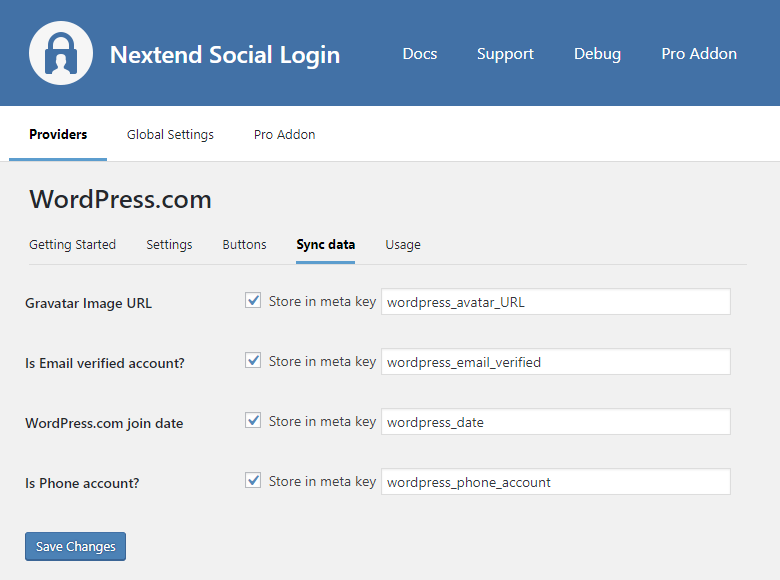
Gravatar Image URL
Stores the user’s Gravatar image URL.
Is Email verified account?
Stores if the user’s account has been verified (via email).
WordPress.com join date
Stores the date when the user joined WordPress.com.
Is Phone account?
If this is a phone account then the user does not have a verified email address.
Common error messages returned by WordPress.com during verification
invalid_request
{“error”:”invalid_request”,”error_description”:”Mismatch in redirect_uri.”}
Error Code: invalid_request
Error Message: Mismatch in redirect_uri.
The problem is that the entered Authorized redirect URIs field is not correct for your app. Check the 6th step of the App setup to fix the problem.
invalid_client
{“error”:”invalid_client”,”error_description”:”Unknown client_id.”}
Error Code: invalid_client
Error Message: Unknown client_id.
The problem is that the entered Client ID field is not correct for your app or maybe the app with the entered ID was deleted. Check the 12th step of the App setup to fix the problem.
invalid_client
Error: invalid_client: Unknown client_id.
The Client Secret you copied from the WordPress.com app is invalid. Make sure the correct one was copied.
